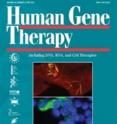Latest advances in gene therapy for ocular disease are highlighted in Human Gene Therapy
Disorders of the eye are excellent targets for gene therapy because the ocular environment is readily accessible, relatively easy to monitor, and sequestered from the rest of the body. A series of articles available online ahead of print in Human Gene Therapy, a peer-reviewed journal published by Mary Ann Liebert, Inc. (www.liebertpub.com), highlight several exciting developments in ocular gene therapy. The articles are available free online at www.liebertpub.com/hum Two review articles describe the unique opportunities for ocular gene therapy. "Gene Transfer for Neovascular Age-Related Macular Degeneration" by Peter Campochiaro shows the potential for long-term delivery of proteins to control abnormal growth of blood vessels. In "Surgical Approaches to Gene and Stem Cell Therapy for Retinal Disease," Stout and Francis outline the many factors that contribute to the successful application of gene therapy to treat ocular disease.
Several research articles illustrate the broad scope of uses and delivery methods for ocular gene therapy. Miyazaki et al. show that neuroprotective gene therapy could reduce cell death in the retinas of rats exposed to damaging hypertension and infections in "Pigment Epithelium-Derived Factor Gene Therapy Targeting Retinal Ganglion Cell Injuries: Neuroprotection against Loss of Function in Two Animal Models." Goldmann et al. report on the therapeutic potential of a gene therapy drug to treat retinal disease caused by a genetic mutation in "PTC124-Mediated Translational Readthrough of a Nonsense Mutation Causing Usher Syndrome Type 1C."
Fuchsluger et al. describe gene therapy to prevent cell death in the cornea, in "Corneal Endothelial Cells are Protected from Apoptosis by Gene Therapy." Mao et al. describe the delivery of a normal copy of the rhodopsin gene to mice with ocular disease caused by a mutated RHO gene and its ability to slow the rate of retinal degeneration in "AAV Delivery of Wild-Type Rhodopsin Preserves Retinal Function in a Mouse Model of Autosomal Dominant Retinitis Pigmentosa."
In the Brief Report "Gene Therapy in Ophthalmology: Validation on Cultured Retinal Cells and Explants from Postmortem Human Eyes," Fradot and colleagues show how gene therapy strategies can be developed and refined using cultured cells and explants from human eyes harvested after death to limit research studies done in primates.
"The most dramatic clinical success of in vivo gene therapy has been realized using AAV vectors in the treatment of a rare inherited form of congenital blindness; some level of functional improvement was realized in three independent trials. A number of scientists from around the world are progressing in vivo gene therapy into a number of other ocular disorders. This issue of the Journal captures some of these exiting new directions," says James M. Wilson, M.D., Ph.D., Editor-in-Chief, and Director of the Gene Therapy Program, Department of Pathology and Laboratory Medicine, University of Pennsylvania School of Medicine, Philadelphia.
Source: Mary Ann Liebert, Inc./Genetic Engineering News
Other sources
- Latest advances in gene therapy for ocular disease are highlighted in Human Gene Therapyfrom PhysorgMon, 9 May 2011, 20:00:36 UTC
- Latest advances in gene therapy for ocular disease are highlighted in Human Gene Therapyfrom Science BlogMon, 9 May 2011, 20:00:21 UTC
